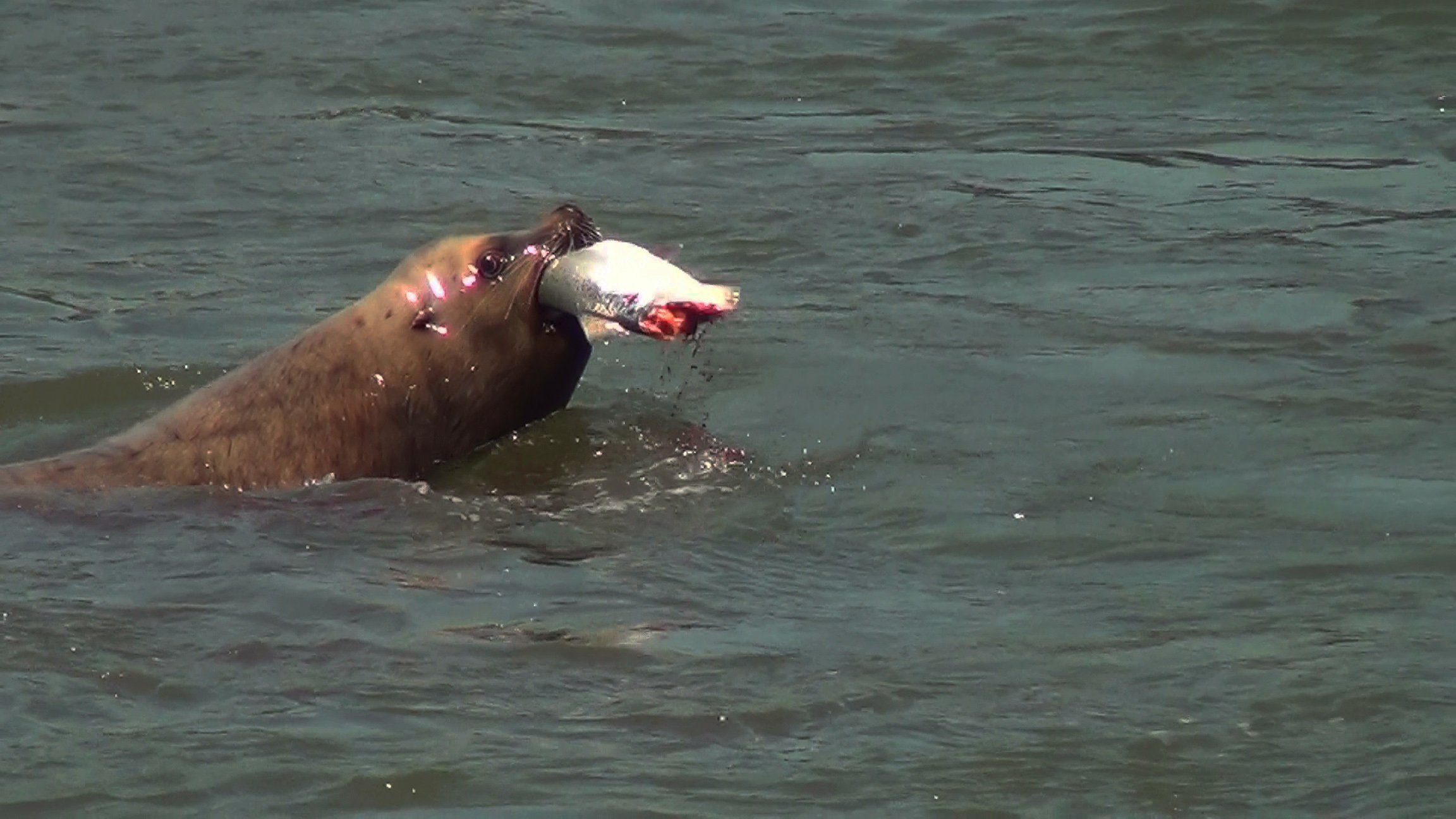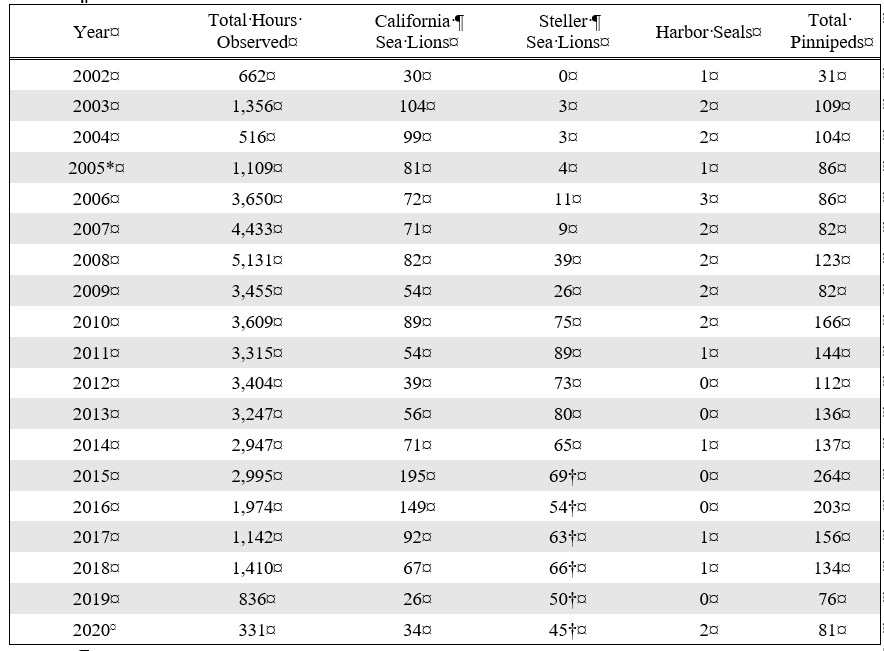Corps of Engineers Report: Steller Sea Lions Are Taking A Big Bite Out Of Fish Runs At Bonneville Dam
- March 12, 2021
- John Harrison

In a preliminary report, the U.S. Army Corps of Engineers observes that sea lion predation on fish at Bonneville Dam in 2020 continued a general decline that began around 2015. However, while the number of California sea lions has declined substantially at the dam, the number of Steller sea lions, the larger of the two species, has not.
Until 2019, data collection on predation by sea lions occurred in the spring, but in that year the Interim Biological Opinion on hydropower operations, issued to define protection requirements for ESA-listed salmon and steelhead, required monitoring of predation in the fall, as well, to gauge the predation impacts on fall-run fish.
2021 daily predation monitoring is under way, and so far observers have been seeing five or fewer sea lions per day at the dam. The Corps monitors sea lion abundance daily, and begins to monitor predation when there are more than 20 sea lions present in the tailrace at Bonneville – the area immediately downstream of the dam.
Here are some of the key conclusions in the draft report:
- Between August 25, 2019 and May 20, 2020, sea lions killed an estimated 1,365 fall Chinook, 1,180 spring Chinook, 174 steelhead, 156 coho, and 57 white sturgeon. In the fall of 2019, sea lions were observed killing 762 White Sturgeon. “Why more [sturgeon] are killed in the fall and winter than the spring is unclear, but the additive mortality of White Sturgeon over time at Bonneville Dam may be contributing to the questionable status of the stock,” the report states.
- According to the report, the number of California Sea Lions at Bonneville has been greatly reduced “undoubtably as a result of management efforts to remove these animals.”
- The average number of Steller sea lions at Bonneville during the fall and winter of 2019 was 40.5 percent greater than in 2018 and 83.9 percent greater than the previous eight-year average. Over the last nine years, the Corps has documented that Steller sea lions are arriving earlier and staying longer at Bonneville. In 2019, Stellers were only away from Bonneville for eight weeks.
- White Sturgeon and winter steelhead are disproportionately impacted by Stellers at Bonneville, and Stellers now account for more than 90 percent of the Spring Chinook predation. “The recent efforts by management to enact removal authority of Steller sea lions may curb these impacts, but the sustained impacts to these fish populations should be noted by fish managers.”
- Stellers also are preying on fish at the base of Willamette Falls, 64 river miles from Bonneville. According to the report “this enforces the connectivity of the systems and suggests that both sites are now used as foraging grounds during the fall and winter.”
- Predation on chum salmon, an ESA-listed threatened species, also was observed. Most chum spawn downstream of Bonneville near Pierce and Ives islands, and so predation on chum at Bonneville suggests that the impact near the spawning areas may be greater. According to the report, “the potential impact to chum salmon based on observed pinniped abundance and predation at Bonneville Dam is concerning and worth management’s attention.”




